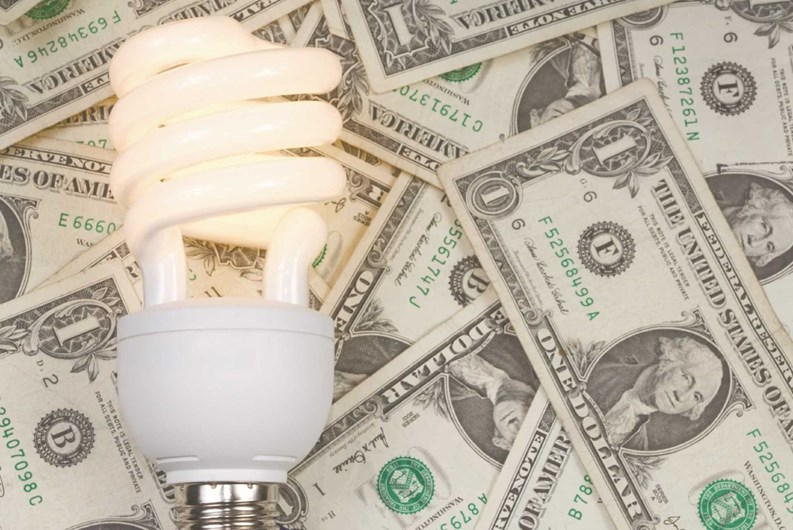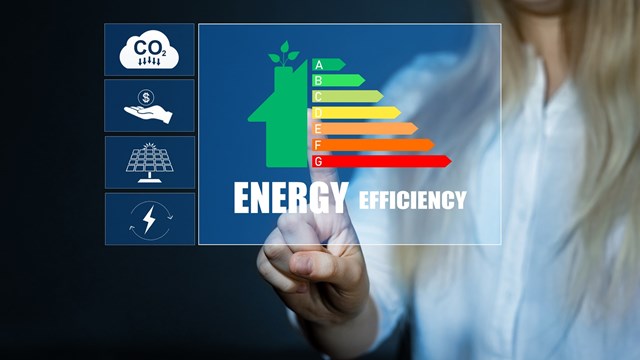It's change on a global scale. Throughout the world and throughout the United States, people are changing the way they think about the environment and how their way of life impacts the planet. With rising energy costs and increasing strains on our energy systems, homeowners in particular are looking at what they can do to reduce their impact on the environment and make the changes necessary to go green wherever possible. In homeowners associations and condo communities throughout New Jersey, people are looking to change their lives, save the planet and protect their pocketbook in myriad ways.
When condo buildings and communities urge these changes en masse, homeowners—as much as they might want to support new energy or green policies—might experience some reluctance, as often the shift to more environmentally-friendly living can cost a few extra dollars at the beginning.For management, the key to a successful transition often rests with how well they can persuade residents to champion the change. With the right facts at their disposal, that effort should be relatively painless, especially when homeowners begin to see the benefits of lower energy costs and a healthier community environment.
Why Go Green?
New Jersey, has taken an active role in promoting energy-efficient, green-living policies. This has been evident in the number of initiatives as well as local and state enterprises established in recent years to help reduce carbon emissions, improve air quality and reduce energy dependence. New Jersey’s Governor Jon Corzine, in fact, has set a goal for the state to reduce its overall energy use by 20 percent by 2020. A significant part of this ongoing effort has focused on the greening of residential communities.
The New Jersey Board of Public Utilities and its Office of Clean Energy has been leading efforts to help homeowners find affordable ways to reduce their global footprints. The CleanPower Community Partners program, for example, encourages New Jersey municipalities, towns and groups to work with residents and businesses to do everything from taking part in educational opportunities to changing thousands of light bulbs to compact fluorescents. In 2007, more than 20 communities including Princeton, Cape May City and Long Branch met or exceeded their clean energy goals.
“When faced with issues such as global warming and climate change, New Jersey municipalities and residents continue to rise to the challenge,” said Jeanne M. Fox, president of New Jersey Board of Public Utilities, at the time of the announcement. “It comes as no surprise to me that these communities have not only made a commitment to reduce their carbon footprints, but they also are leading the way in adopting climate change solutions that benefit our economy and environment.”
Methods of reducing the environmental impact of a residential community or building are growing and evolving every day. In a multifamily building, everything from changing the type of heating oil used or switching to natural gas; replacing aging windows with high-efficiency windows; improving insulation; investing in more efficient HVAC systems; reducing the use of water and recycling water where possible - all can have significant environmental impact and save money in the long run for current and future residents.
It Does Your Wallet Good
Besides the positive feelings and improved karma, green living is also about dollars and sense. Converting systems and practices in an existing building initially can be expensive—something that may cause nervousness on the part of homeowners associations and residents alike. In the long run, though, those costs will be mitigated by ongoing energy savings.
For homeowners looking to make some changes, the first step is to take part in an energy audit. If done through the New Jersey Board of Public Utilities, the cost of the audit—roughly $250 or so—can be reimbursed depending on the number of suggested changes the resident makes. According to the NJBPU website, the audit would involve either a NJBPU representative or a partner contractor coming to the home and conducting a general health and safety check of carbon monoxide levels, moisture and potential indoor air quality problems and checking overall comfort levels, air infiltration rates, insulation levels, heating system efficiency, cooling system/central air efficiency, domestic hot water system efficiency, major appliances and lighting.
The auditor would then “give the homeowner a report detailing [his/her] findings, recommended actions, estimate savings and hopefully a list of contractors that will perform those specified actions,” says Francis Lazaro, an Elizabeth-based energy conservation expert and former auditor who now helps New Jersey residents find ways to reduce their energy use.
It’s important, Lazaro says, to make sure that when a contractor is hired to make changes, that they “measure prior to performing the action and then measure to verify the results of their actions.” For example, he says, “a pull-down attic stairway does not close properly and is not insulated. The recommendation is to insulate and weatherstrip the pull-down stairs with a list of contractors estimating costs to install at $100.”
The contractor should be able to show the amount of heat loss and the cause of the heat loss, then make the change and take new data showing a reduction in heat loss and where that reduction came from—what action, in short, resulted in the improvement? “Saying that one would save if they did something and showing them how they save are two different things,” Lazaro says.
Through programs such as New Jersey’s Home Performance with Energy Star program, changes made as part of an audit can qualify for rebates and other financial aid, lessening the financial burden of going green and improving the return on investment for years to come.
Community associations across the country are working together to try and help homeowners take these kinds of steps to improve residents and in the case of multifamily dwellings, entire buildings. To that end, The Community Associations Institute (CAI) launched its Community Green program, which covers a broad spectrum of green issues, from energy conservation to land conservation. The online program serves as a touchstone for anyone and everyone involved in residential communities to come together and learn more about green issues.
“We wanted to offer a portal where association leaders and homeowners could go to get ideas and also exchange ideas,” says Frank Rathbun, media spokesperson for CAI. “The response has been very good, the feedback very positive.” The site allows visitors to engage in discussion over new ideas and best practices—the more participation, the more robust the site will become.
“Obviously, there’s great interest on the part of most Americans to preserve our environment and reduce energy use,” Rathbun says. “There’s a greater awareness of environmental issues overall.”
And homeowners associations throughout New Jersey and throughout the country have an opportunity to make a significant impact. Said CAI’s CEO Tom Skiba, CAE, when Community Green was first launched, “Close to 60 million Americans now live in homeowner and condominium associations, so we have the opportunity to make a real difference—and that’s what we need to do…. Like Americans in general, many community associations are already taking steps to reduce their environmental footprint,” Skiba says. “But even more can be done. Progressive, forward-thinking associations have the opportunity to show leadership and set examples that other communities can follow.”
While interest and participation in green changes continue to grow, it’s important that each individual HOA make their own decisions about what environmental rules and regulations they want to implement within their community, Rathbun says. “That’s part of the whole idea (of Community Green). It’s important to engage and discuss.”
Discussion and education are at the heart of a successful transition to green living. People who know the options, the costs and the potential rewards can make good, sound decisions. “There is a saying: ‘A chain is only as strong as its weakest link,’” Lazaro says. “It has been my experience for well over 20 years that the weakest link in conserving energy in one’s home is the consumer. So the most effective change one can make to their home in terms of energy conservation is to become a more informed consumer.”
Communication and education are key, Rathbun says. “We encourage boards and HOA professionals to always be open with their residents. Newsletters, bulletin boards, websites, meetings and events can all help” when it comes to letting people know that new policies are being discussed or new eco-friendly measures suggested. “Communication is the key to success in all areas and ways. There is no substitute for dialogue.” It helps move issues forward and “avoid problems later,” Rathbun adds.
Going green can be a winning situation for all involved—saving the environment, saving money and giving homeowners the opportunity to feel good about preserving this planet for their children and grandchildren. With good conversation, education and a healthy dose of discussion, the greening of a homeowners association can be painless. And years down the road when the energy bills are lower and the sky is just a bit bluer, residents and boards alike will be glad they made the change.
Liz Lent is a freelance writer, teacher and a frequent contributor toThe New Jersey Cooperator.







Leave a Comment